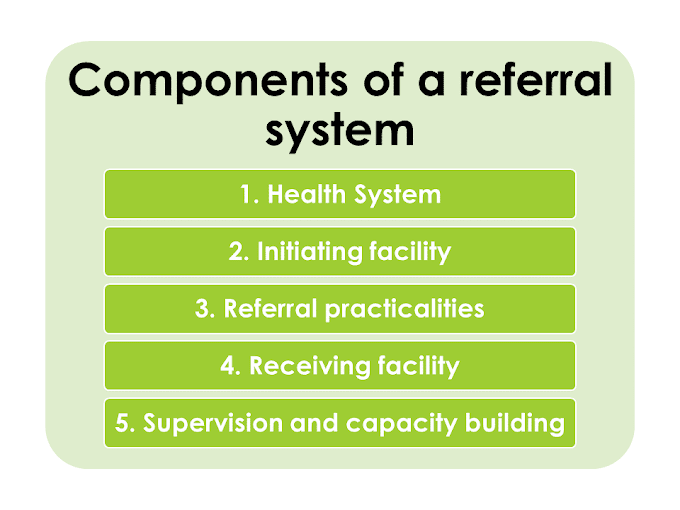Contraceptive methods are, preventive methods to help women avoid unwanted pregnancies. They include all temporary and permanent measures to prevent pregnancy resulting form coitus.
It is now generally recognized that there can never be an ideal contraceptive - that is, contraceptive that is safe, effective, acceptable, inexpensive, reversible, simple to administer, independent of coitus, long-lasting enough to obviate frequent administration and requiring little or no medical supervision.
Further, a method which may be quite suitable for one group may be unsuitable for another for another because of different cultural patterns, religious beliefs and socio-economic milieu. As there is no single method likely to meet the social, cultural, aesthetic and service needs of all individuals and communities, the search for an 'ideal contraceptive' has been given up.
The present approach in family planning programmes is to provide a "cafeteria choice" that is to offer all methods from which an individual can choose according to his needs and wishes and to promote family planning as a way of life.
Each contraceptive method has its unique advantages and disadvantages. The success of any contraceptive method depends not only on its effectiveness in preventing pregnancy but on the rate of continuation of its proper use.
Types of Contraception Method
The contraceptive methods may be broadly grouped into two classes - spacing methods and terminal methods, as shown below:
[A] Spacing Methods
- Barrier Methods: (a) Physical Methods; (b) Chemical Methods; (c) Combined Methods
- Intra-uterine Devices
- Hormonal Methods
- Post-conceptional Methods
- Miscellaneous
[B] Terminal Methods
- Male Sterilization
- Female Sterilization
Barrier Methods
A variety of barrier or "occlusive" methods suitable for both men and women are available. The aim of these methods is to prevent live sperm from meeting the ovum. Barrier methods have increased in popularity quite recently because of certain contraceptive and non-contraceptive advantages.
The main contraceptive advantages is the absence of side-effects associated with the "pill" and IUD. The non-contraceptive advantages include some protection from sexually transmitted diseases, a reduction in the incidence of pelvic inflammatory disease and possibly some protection from the risk of cervical cancer.
Barrier methods require a high degree of motivation on the part of the user. In general they are less effective than either the pill or the loop. They are only effective if they are used consistently and carefully.
Types of Barrier Contraceptive Methods
[A] Physical Methods
1. Condom
Condom is the most widely known and used barrier device by the males around the world. In India, it is better known by its trade name NIRODH, a Sanskrit word, meaning prevention. Condom is receiving new attention today as an effective, simple "spacing" method of contraception, without any major side effects. In addition to preventing pregnancy, condom protects both men and women from sexually transmitted diseases. At present condom is available for both male and female.
| Male condom |
| Female condom |
2. Diaphragm
The diaphragm is a vaginal barrier. It is invented by a German physician in 1882. Also known as "Dutch cap", the diaphragm is a shallow cup made of synthetic rubber or plastic material. The diaphragm is inserted before sexual intercourse and must remain in place for not less than 6 hours after sexual intercourse. A spermicidal jelly is always used along with the cervix.
| Diaphragm contraceptive cap |
3. Vaginal Sponge
A contraceptive sponge is a soft, disk-shaped device made of polyurethane foam that contains spermicide but it is only recently one has been commercially marketed in USA under the trade name TODAY for the sole purpose of preventing conception. It is put deep inside the vagina before sex.
[B] Chemical Methods
In the 1960s, before the advent of IUDs and oral contraceptives, spermicides (vaginal chemical contraceptives) were used widely. They comprise four categories.
2. Creams, jellies, and pastes - squeezed from a tube
3. Suppositories - inserted manually
4. Soluble films - C-film inserted manually
The commonly used modern spermicides are "surface active agents" which attach themselves to spermatozoa and inhibit oxygen uptake and kill sperms.
Intra-Uterine Devices
IUD is a small, often T-shaped birth control device that is inserted into the uterus to prevent pregnancy. Intra-uterine devices are one form of long-acting reversible birth control.
There are two basic types of IUDs : non-medicated and medicated. Both are usually made of polyethylene or other polymers; in addition, the medicated or bioactive IUDs release either metal ions (Copper) or hormones (progestogens).
The non-medicated or inert IUDs are often referred to as first generation IUDs. The copper IUDs comprise the second and the hormone-releasing IUDs the third generation. In India, under the National Family Welfare Programme, Cu-T-380-A has been used.
| Copper-T IUD |
Hormonal Contraceptives
Hormonal contraceptives when properly used are the most effective spacing methods of contraception. Oral contraceptives of the combined type are almost 99.9% effective in preventing pregnancy. They provide the best means of ensuring spacing between one children and another.
Classification of Hormonal Contraceptives
[A] Oral pills
- Combined pill
- Progestogen only pill
- Post-coital pill
- Once-a-month (long acting) pill
- Male pill
[B] Depot (slow release) formulations
- Injectable e.g. DMPA (Depot-medroxyprogesterone acetate), NET-EN (Norethisterone enantate), DMPA-SC
- subcutaneous implants e.g. Norplant
- Vaginal rings
The Department of Family Welfare, in the Ministry of Health and Family Welfare, Government of India has made available 2 types of low-dose oral pills under the brand name of MALA-N and MALA-D. MALA-N is supplied free of cost through all over the country.
Post-Conceptional Methods
The post conceptional method is the termination of pregnancy. following methods used to terminate a pregnancy after conception.
[A] Menstrual regulation
A relatively simple method of birth control is "menstrual regulation". It consists of aspiration of the uterine contents 6 to 14 days of a missed period, but before most pregnancy tests can accurately determine whether or not a women is pregnant. Cervical dilatation is indicated only in nullipara or in apprehensive subjects. No after-care is necessary as a rule.
[B] Menstrual induction
This is based on disturbing the normal progesterone-prostaglandin balance by intrauterine application of solution or pellet of prostaglandin F2. By this the uterine contraction start, and bleeding occur which is continues for 7-8 days.
[C] Oral abortifacient
Mifepristone in combination with misoprostol is 95% successful in terminating pregnancies of up to 9 week's duration with minimum complications.
The government of India prepare a law for termination of pregnancy, which is called "the medical termination of pregnancy act 1971". This act prevent the illegal abortion to all over the country.
Miscellaneous Methods of Contraception
The following methods are include in this as a contraception. This method also called natural methods of contraception.
[A] Abstinence
The only method of birth control which is completely effective is complete sexual abstinence.
[B] Coitus Interruptus
This is the oldest method of voluntary fertility control. It involves no cost or appliances. It continues to be a widely practiced method. The male withdraws before ejaculation, and thereby tries to prevent deposition of semen into the vagina. Some couples are able to practice this method successfully, while others find it difficult to manage.
[C] Safe Period / Rhythm Method
This is also known as the "calendar method" first described by Ogino in 1930. The method is based on the fact that ovulation occurs from 12 to 16 days before the onset of menstruation.
[D] Natural Family Planning Methods
The term "natural family planning" is applied to three methods:
- Basal body temperature method (BBT)
- Cervical mucus method
- Symptothermic method
[E] Breastfeeding
Field and laboratory investigations have conformed the traditional belief that lactation prolongs postpartum amenorrhea and provides some degree of protection against pregnancy. The protection is provide up to 6 months after the child birth but it varies women to women.
Terminal Method Contraception / Sterilization Method
Voluntary sterilization is a well-established contraceptive procedure for couples desiring no more children. Currently female sterilizations accounts for about 85% and male sterilizations for 10-15% of all sterilizations in India, inspite of fact that male sterilization is simpler, safer and cheaper than female sterilization. For male sterilization vasectomy is performed, and tubectomy for female sterilization.





0 Comments